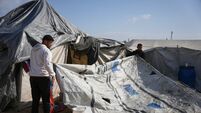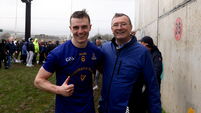Tsunami alert adds to young victims’ trauma
For three months his staff had worked to reassure the smallest victims of December’s tsunami that the odds of such a catastrophe ever happening again in their lifetime were infinitesimal.
“We are getting their minds settled. Then suddenly in the middle of the night the children are in a deep sleep and the mother comes in shouting and screaming ‘run to the temple, run to the mountains’ and you are in the darkness running for your life. Can you imagine the psychological effect of that?”
Harsha Navaratne is chairman of the Sewalanka Foundation, one of Sri Lanka’s best known aid agencies, which has been working to rebuild communities shattered by the St Stephen’s day disaster.
The aftershocks and fresh quakes that continue to hit the region add to the already immense task, not least because they add the paralysis of fear to the pain and turmoil of survivors.
Mr Navaratne was in the air, flying to Ireland, when Monday night’s tsunami alert terrified his country once again. “We are thinking now that this is going to be part of the life in Sri Lanka and the best thing is to develop that mentality with the children. We have to tell them this is nature, that nature makes floods, and heavy rains and other problems, but we can make emergency and evacuation plans and this is what we must learn.”
Dealing with the aftermath of the tsunami has put Sewalanka on a steep learning curve. The organisation was set up to assist the quarter of a million people displaced by the conflict in the rebel Tamil-held regions of the north, but since December 26 it has become the leading indigenous relief agency with 35,000 coastal community families in its care.
It has teamed up with Irish aid agency, Concern, which has an €8.8 million spending plan for Sri Lanka over the next two years. As well as channelling funds to its local partner, Concern, is also passing on the management expertise essential to run the massive operation successfully.
In the immediate aftermath of the tsunami, Concern and Sewalanka provided shelter, food, healthcare and sanitation before moving on to replace fishing boats, restore schools and create childcare facilities.
One obstacle to a return to normality is the government’s decision to create a 100-metre wide exclusion zone along the coast, forcing fishermen and families dependent on beach tourism to move inland.
Mr Navaratne says the resettlement scheme will demand creativity but he believes the inherent problems can be smoothed out.
But he wants more than a return to the former way of life for his country and one of his objectives in visiting Ireland is to seek help for a broader based plan to use the current rehabilitation efforts as a way of achieving long-term peace.
The war with the Tamil Tigers is on hold since the tsunami, but the threat of a resumption is ever-present. “There are tensions building because the victims of the tsunami got a lot of help very quickly while the victims of the conflict have been suffering for a long time and asking who is helping us. I think we can use Ireland’s experience in peace and reconciliation to show us what to do.
“If we can use the tsunami disaster as an opportunity to build peace in all communities, that will be the greatest thing.”













